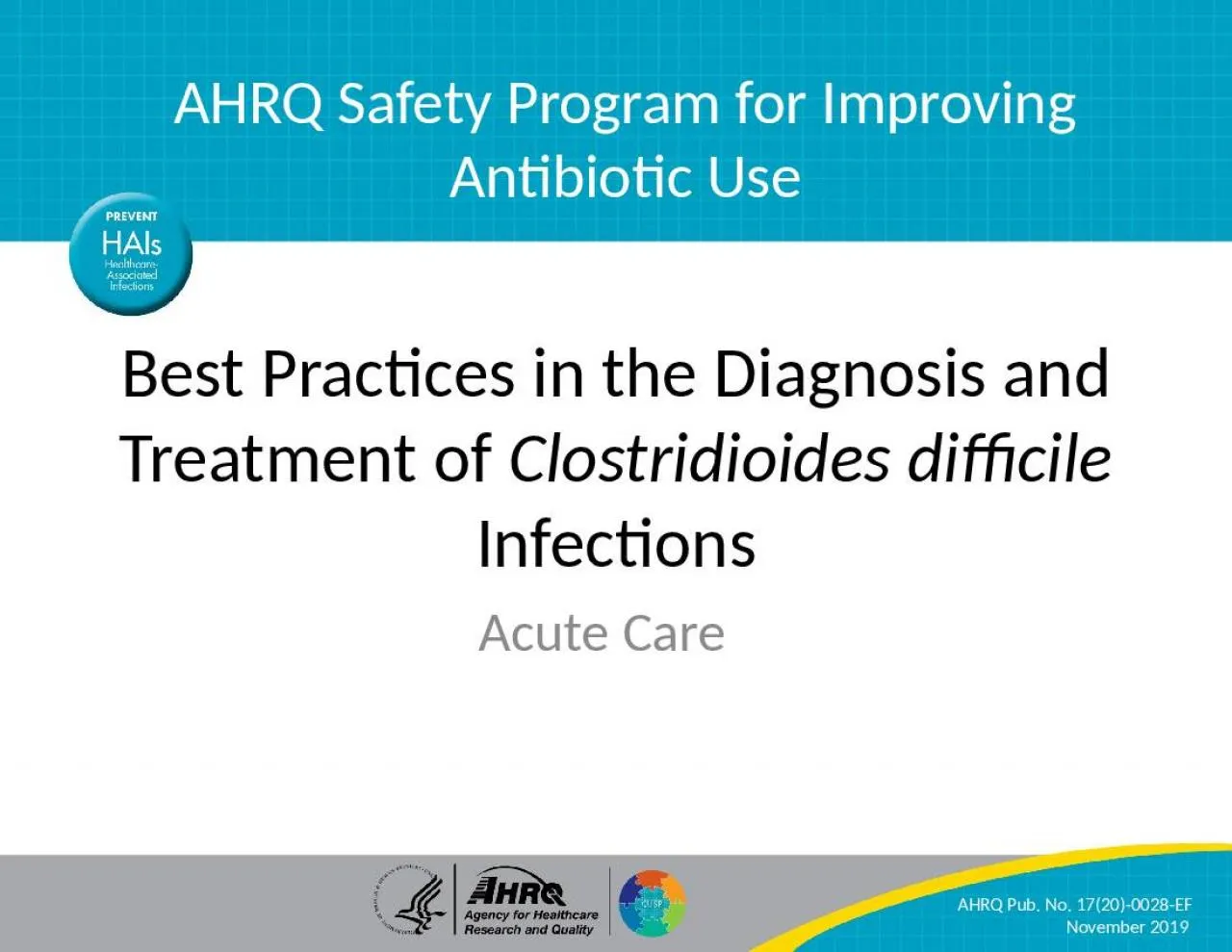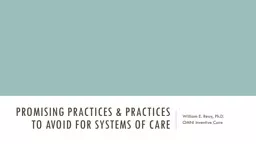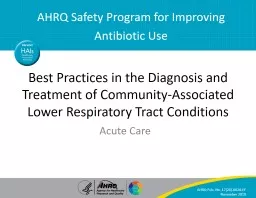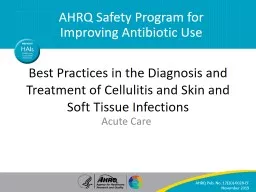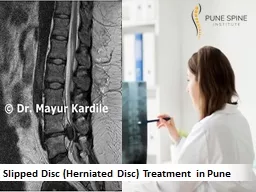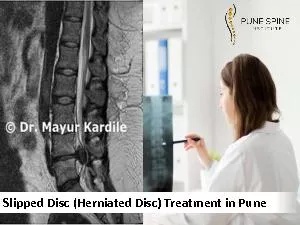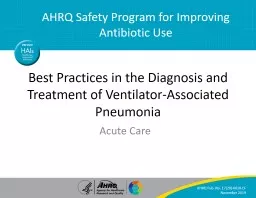PPT-Best Practices in the Diagnosis and Treatment of
Author : bethany | Published Date : 2022-02-10
Clostridioides difficile Infections Acute Care AHRQ Safety Program for Improving Antibiotic Use AHRQ Pub No 17200028EF November 2019 Objectives Discuss the importance
Presentation Embed Code
Download Presentation
Download Presentation The PPT/PDF document "Best Practices in the Diagnosis and Trea..." is the property of its rightful owner. Permission is granted to download and print the materials on this website for personal, non-commercial use only, and to display it on your personal computer provided you do not modify the materials and that you retain all copyright notices contained in the materials. By downloading content from our website, you accept the terms of this agreement.
Best Practices in the Diagnosis and Treatment of: Transcript
Download Rules Of Document
"Best Practices in the Diagnosis and Treatment of"The content belongs to its owner. You may download and print it for personal use, without modification, and keep all copyright notices. By downloading, you agree to these terms.
Related Documents

